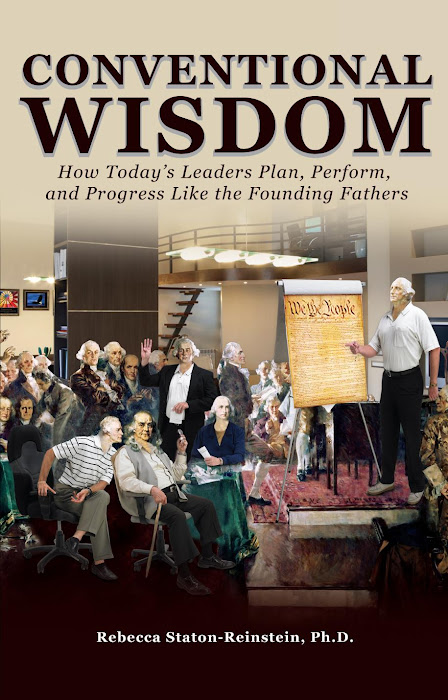Government Seeks Small Business to Supply Strategic Planning Services
...That headline in an email came to my attention immediately and I kept reading the Request For Proposal. It sounded more and more intriguing as I raced through the details. I stopped for a moment when it said the firm would need top security clearance. But I didn't think that would be a problem. After all, my book, Success Planning: A 'How-To' Guide for Strategic Planning, is used by one of the US military's war colleges...
...That headline in an email came to my attention immediately and I kept reading the Request For Proposal. It sounded more and more intriguing as I raced through the details. I stopped for a moment when it said the firm would need top security clearance. But I didn't think that would be a problem. After all, my book, Success Planning: A 'How-To' Guide for Strategic Planning, is used by one of the US military's war colleges...
So I kept on reading and thinking about what they were requesting and how my company fit all the requirements. They also wanted only small businesses to bid on the job. Finally I got to the last line where they let the cat out of the bag...or should I say Baghdad...That's right...the government is ready to do strategic planning in Iraq!
What? Did I read that right? Politics aside, folks, it's a little late...Shouldn't they have had a strategic plan before? But I promised I wasn't going to write about politics...
Wait a minute...Is it really so absurd to engage in serious strategic planning? Even now?
Maybe not...Stick with me. What about your own business or organization? Is everything going 100% the way you want? Are all your results moving in a positive direction? Are you facing some tough challenges or even disaster? Where do you need to be by this time next year? What changes do you need to make to assure your future?
You see, strategic planning can start any time. The key is to do a thorough and excruciatingly honest situational analysis of every aspect of your operation. Be sure to include a SWOT Analysis: What are your Internal Strengths and Weaknesses and what are your External Opportunities and Threats?
Prioritize these based on their levels of impact -- High, Medium or Low. Or, if you need more sophistication, you can assign numbers or weighting factors. Then decide which of your highest External Threats you need to have a contingency plan for and how you can leverage the highest External Opportunities.
As you go through your planning process and set your Goals and Objectives -- the descriptions of the results you want -- go back to your Internal Strengths and Weaknesses. Decide how you will use your Internal Strengths (especially your highest ones) to help you meet your Goals and Objectives. These will be specific tactics that you will execute. Then look at the Internal Weaknesses. Which of them (especially the highest ones) will have a negative effect on reaching your Goals and Objectives? Decide which specific tactics -- actions --
you will need to take to mitigate or minimize these Weaknesses.
you will need to take to mitigate or minimize these Weaknesses.
Remember, many people remember to look at the 'worst case' and forget to look at the 'best' case to maximize their Internal Strengths. Now all you have to do is execute your plan!
So maybe it's a great idea for the government to start this sort of analysis and planning in Baghdad...Plus, it's a fabulous opportunity for some small business...
And, no, I will not be applying for the job...Facilitating planning sessions in a flack jacket is not my idea of following Dr. W. Edwards Deming's dictum to 'have joy in work!'
-- Rebecca Staton-Reinstein, Ph.D., President
Advantage Leadership, Inc.
* * * * *
Want to learn more about creating a strategic plan that gets robust results?
There are two easy ways to get our best selling book, Success Planning: A 'How-To' Guide for Strategic Planning. It is now used in hundreds of companies world wide and is part of the curriculum at one of the US military War Colleges.
(1) Buy it directly from our website: www.AdvantageLeadership.com/book.html Add on our unique 30-day e-mail mini-course on strategic planning for more practical tips and techniques.
(2) Buy it on Amazon: Search on Strategic Planning -- we are on one of the first few pages
* * * * *
Look for our new book, Conventional Wisdom How Today's Leaders Plan, Perform and Progress Like the Founding Fathers early in 2008 and read more about how leaders handle mistakes and much more.
Based on the US Constitutional Convention of 1787 and interviews with successful CEOs, this unique business book combines history and business. I examine the Convention as an example of typical strategic planning with all of its creativity and messiness. Spring forward to the present and see how today's CEOs use the same techniques to transform their companies and translate vision into reality. Learn from all of the leaders --what works in the real world so that you can improve your own abilities as a strategic leader.





